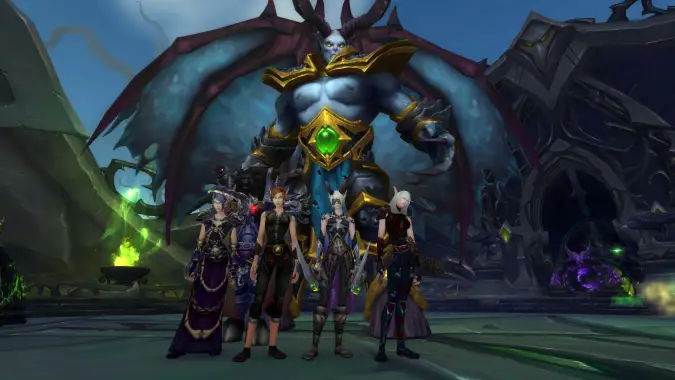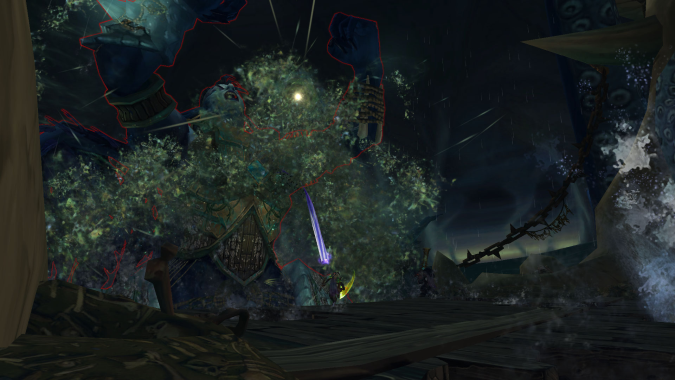Spectral Insight: Havoc and Vengeance Demon Hunter playstyle overview
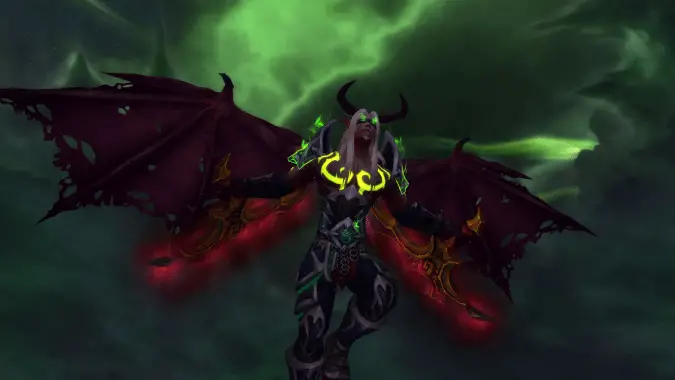
The alpha realms have been updated and re-updated since the last time we talked about Demon Hunters, and there have been changes aplenty for WoW‘s newest class. While last month was focused primarily on the story Demon Hunters will be experiencing, this month we’re taking a look at just what exactly it feels like to play a Demon Hunter right now. If you haven’t been keeping tabs on the ability or playstyle updates, here’s your chance to see what they’re all about!
Spoiler alert! While no story elements will be discussed here, this post does discuss Demon Hunters, the upcoming class for World of Warcraft. If you want the gameplay to completely surprise you, read no further!
A brief primer
Before diving into Demon Hunters, I want to give fair warning that the class is still very much in flux — and that goes doubly so for their tanking spec. While some abilities seem mostly set in stone, others are changing with every new alpha build. Blizzard certainly seems to have a specific overall playstyle in mind with both Demon Hunter roles, but the nitty gritty of each ability will likely change (and change again) in the coming months.
There are, however, a few important facets of each role that likely won’t be changing. Each spec has its own resource that has a base cap of 100: Fury for Havoc, the DPS spec, and Pain for Vengeance, the tank spec. Fury is primarily generated through abilities, though there are talents that will modify the ways in which you gain Fury (for example, Deceiver’s Fury causes dodges to generate Fury). Pain is generated similarly, though there are a few more baseline abilities that generate it. Additionally, you gain it by taking damage, though the amount per hit is very small compared to the amount gained through abilities.
Each spec features its own version of the Shattered Souls passive effect. For Havoc, a Soul Fragment is generated on killing blows; for Vengeance, killing blows only have a chance to generate a Soul Fragment. What do Soul Fragments do? They heal the Demon Hunter for 25% of its health, and they increase damage done if they’re taken from a demonic enemy. Resource generation and Shattered Souls both play an important part of the Demon Hunter playstyle, so now that we’ve gotten that out of the way, let’s dive into what’s currently making the class feel so fun!
Tanking with a Vengeance
Let’s start with the tank spec, Vengeance. Right now, Vengeance feels like a cross between Blood Death Knights and Brewmaster Monks. Stylistically, they feel more like a tank in a DPSer’s clothing. Outside of a unique, much more bulky visual for Metamorphosis, Vengeance tanks look as though they could be DPS — they fight quickly, they dual wield single-handed weapons, and they tank through heavy offensive abilities. Mechanically, they are very reliant on self-healing through a variation of Demon Hunters’ passive effect, Shattered Souls. Of course, the stealing of souls is not limited to killing targets due to some Vengeance-only abilities that occasionally rip soul fragments from your target.
![]()
Shear is your primary Pain-building ability and you’ll be using it often — it builds Pain, and it’s also the main way you’ll generate Soul Fragments — albeit slightly lesser versions — while in combat. Shear’s effect is accompanied by Soul Cleave, which absorbs all nearby souls in addition to a flat 10% heal on hit. In addition to this passive healing that occurs during your standard rotation, you’ve also got some active mitigation and a nice passive that reduces magic damage taken and increases stamina and armor. Up until the most recent build, this method of survivability felt a little unpredictable. Soul fragments weren’t always available when needed, and the on-demand defensive abilities felt weak.
However, two key abilities were changed and will likely remedy some of the tanking woes I’ve encountered. For starters, Fracture was changed from a long-cooldown ability to a Pain-consuming ability with no cooldown. Meanwhile, Soul Carver was drastically redesigned from a flat 20% damage reduction to a DOT effect on your target that will generate soul fragments. Coupled with these abilities is Demon Spikes, which has a decent uptime thanks to its 13-second cooldown — although mastery of the class will require proper usage of self-healing during the times when Demon Spikes is on cooldown.

Another major aspect of Vengeance Demon Hunters are Sigils. Sigils add a uniqueness to Vengeance akin to the uniqueness that the Jade Serpent and Black Ox Statues offered to Monks. There are currently three baseline Sigils, Sigil of Silence, Sigil of Chains, and Sigil of Flame, as well as an option to talent into Sigil of Misery (pictured in respective order above). What I like about the Sigils is that they’re relatively simple in design, but still feel satisfying and unique to use. On top of that, there are some talents that alter Sigils in a way that feels reminiscent to picking a specific ability-based build in Heroes of the Storm.
Overall, the biggest drawback to Vengeance is the reliable generation of soul fragments — which Blizzard seems to be fully aware of, if the recent changes are any indication. While there are additional abilities that add complexity to the spec, the overall designs feels pretty solid… and very fun!
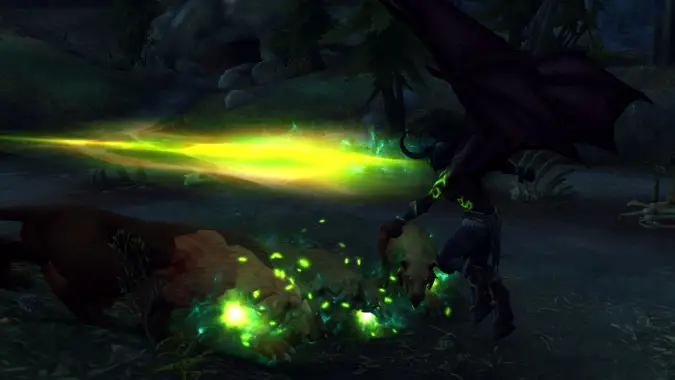
Wreaking Havoc as DPS
But of course, Demon Hunters aren’t all about tanking — they also want to bring with them their Fury. Compared to Vengeance Demon Hunters, Havoc DPS has gone through fewer iterations over the course of the alpha. Both specs’ talent trees are still facing constant adjusting, but the primary rotation for Havoc feels fairly set in stone. The Havoc rotation is reminiscent of a Combat Rogue crossed with a Windwalker Monk.
What strikes me most so far about Havoc is how fluid the combat animations feel. Granted, many melee abilities have been given visual upgrades in Legion, but the Havoc abilities remind me of the first time I saw a Monk do a Roll into a Jab into a Blackout Kick. Their abilities flow together almost like a dance. What abilities are those, exactly? Much like Vengeance, Havoc has a build ability and a spend ability that you’ll be spending a lot of time using. Unlike Vengeance, Havoc relies pretty heavily on bursts of AOE damage in between the Fury generation.
You may have noticed during our leveling streams that Eye Beam is an immensely powerful AOE ability. Coupled with Blade Dance every 8 seconds, Chaos Nova, and Fury of the Illidari (our Artifact ability), Havoc Demon Hunters are going to be a powerhouse on fights with multiple enemies. I’ll be honest, I was surprised that Eye Beam’s damage wasn’t split among the number of targets it hits. Look at the base damage it does compared to our other abilities — it’s incredible. And while it’s hard to say what our damage output is like without meters to give exact numbers, Havoc seems intentionally built around periods of focused burst. Often times during soloing, I’ve waited until Eye Beam is up, pulled multiple mobs, and then nuked them down all at once. Compared to my attempts at chaining single-targets, this method seemed more effective.
What this means for DPS Demon Hunters is that there will likely be peaks and valleys of damage output over the course of an encounter. Coming from a Shadow Priest, who notoriously has no major cooldowns, it’s taken a little getting used to in order to figure out how to make the most of my abilities when my cooldowns are not up. Damage numbers are constantly being iterated upon, but I admit that I wouldn’t mind seeing just a little less emphasis on Eye Beam and slightly more on Blade Dance. I don’t want to take away the uniqueness of Havoc, but I also don’t want to feel weak until Eye Beam is off cooldown.
But this is alpha. Numbers are sure to change and I’m having an incredible amount of fun on Havoc right now even with the numbers being what they are. I will say, though, much of my love for Havoc comes from its exploratory capabilities more so than the combat playstyle itself. Havoc is a solid addition to WoW‘s DPS roster with a strong anchor to the Demon Hunter class fantasy.
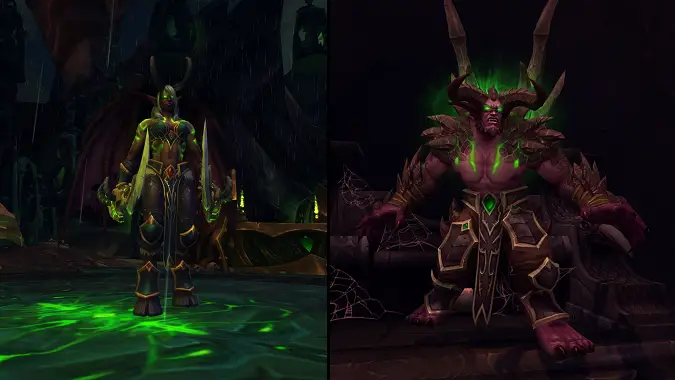
Comparing the two
And finally, where would we be without a comparison of some of the differences between the two specs? The primary difference is that Havoc Demon Hunters feel more mobile than Vengeance. In addition to a Mastery that gives a passive movement increase, Fel Rush and Vengeful Retreat are both Havoc-only. And while Infernal Strike acts as a pseudo-mirror to Fel Rush, it doesn’t allow for some of the complex acrobatics that I’m sure many Havoc players will be enjoying. Havoc Demon Hunters are going to be the kings and queens of exploration and mobility, and Vengeance Demon Hunters merely their apprentices.
So what feels similar? Both specs currently share Consume Magic, Spectral Sight, and Throw Glaive with no changes. Additionally, there are versions of Metamorphosis for both Havoc and Vengeance that each fit their respective specialization well. Lastly, each spec still Shatters Souls from enemies, though this only occurs on killing blows for Havoc whereas it’s a major factor in Vengeance’s gameplay.
As I discussed last time, it can throw you off a little to gain some of these abilities during the starting experience, only to lose them if you choose Vengeance. However, both Demon Hunter playstyles are shaping up to be familiar yet unique experiences that complement each other and bring the class fantasy to life. Next time, we’ll take a look at… something! The alpha changes a lot and I may be able to write an entirely different version of this article come next month. More than likely, though, Artifact and talent trees will be more solidified and we can look at traits in the works for Demon Hunters.
Please consider supporting our Patreon!
Join the Discussion
Blizzard Watch is a safe space for all readers. By leaving comments on this site you agree to follow our commenting and community guidelines.
